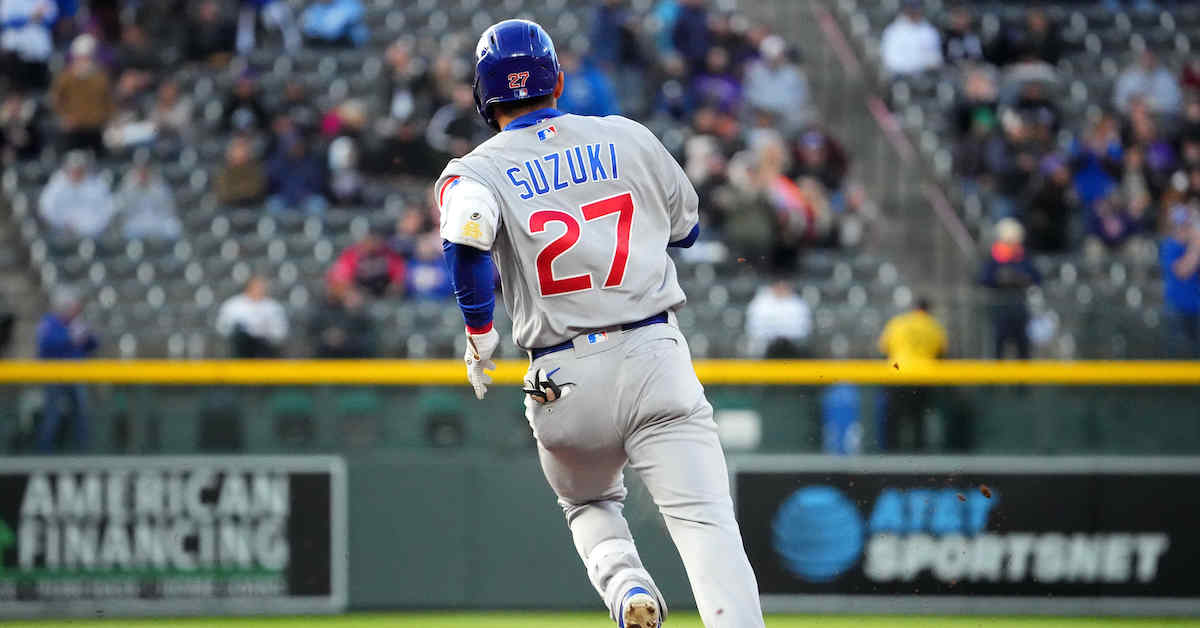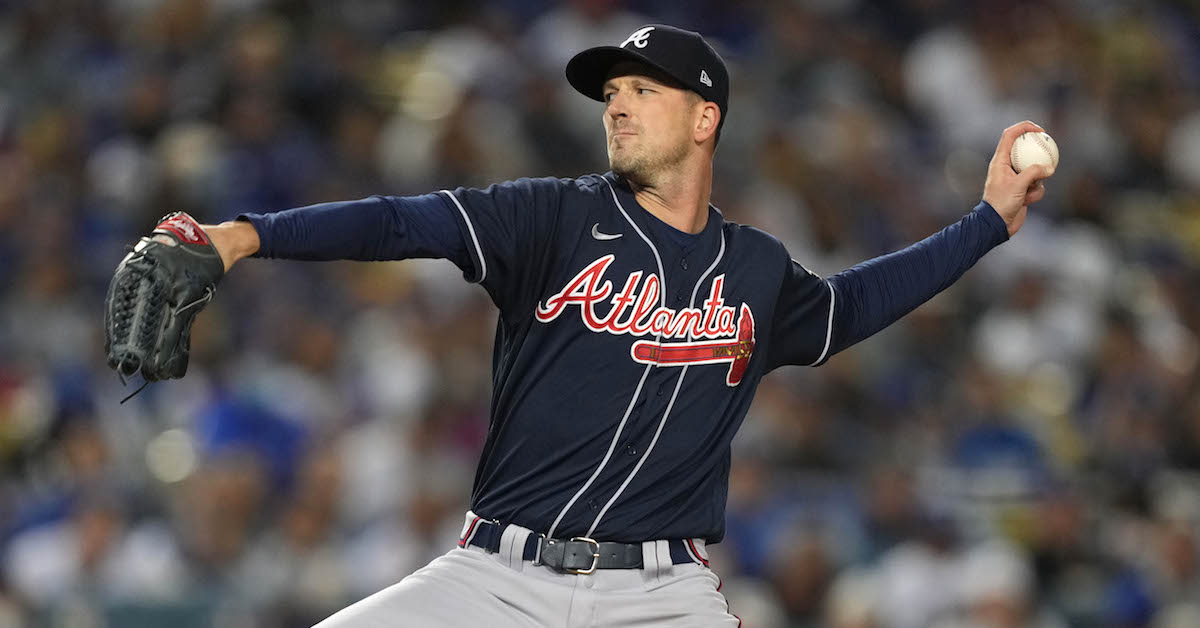Seiya Suzuki Has Been a Hit So Far

If there were any fears about how well Seiya Suzuki would transition to Major League Baseball, his hot start with the Cubs has probably quelled them. The 27-year-old right fielder has collected hits in each of his first six games, three of them homers. He reached base safely at least twice in each of those games (the last only with benefit of a throwing error) while demonstrating otherworldly plate discipline to go along with his impressive power. Admittedly, we’re in small-sample theater, but the show thus far is worthy of strong reviews.
It’s not as though Suzuki was expected to flop given that the Cubs invested nearly $100 million in acquiring him — $85 million over a five-year deal plus another $14.625 million as a posting fee for the Hiroshima Carp. As Kevin Goldstein described him when he signed with Chicago in mid-March, “At 27, Suzuki is a player in his prime, with an impressive track record of performance at Japan’s highest level since his teens. This is not a prospect; this is an established talent who just hasn’t played in Major League Baseball yet.”
Suzuki hit .317/.443/.639 with 38 homers and just a 16.3% strikeout rate for Hiroshima last year while winning his second batting title — a slash-stat triple crown this time — and earning Best Nine honors for the sixth straight time in Nippon Professional Baseball. While both the homers and slugging percentage represented career highs, his season wasn’t wildly far off from his career numbers in NPB (.315/.414/.570). Between ZiPS and Steamer, our projection systems figured that he would lose some power in the move to MLB, but his Depth Charts forecast for a .287/.369/.508 line and .371 wOBA still casts him as one of the game’s top 20 hitters.
At least through Thursday, so far, so good. I won’t pretend that half a dozen games is proof of anything for any player, and none of the stats in this piece are even close to stabilizing, but Suzuki has proven to be very entertaining while more than holding his own against quality pitchers from day one.
Indeed, on Opening Day against the Brewers, Suzuki reached base in each of his first three plate appearances. He worked a six-pitch walk and collected a single off reigning NL Cy Young winner Corbin Burnes — no big deal, just having immediate success against the qualifier who had the majors’ lowest wOBA allowed in 2021 — and followed that with an eight-pitch walk against reliever Aaron Ashby. In Chicago’s second game two days later, he drove in three runs, the first two against Brandon Woodruff via a sacrifice fly and a bloop single to center, the third via a four-pitch bases-loaded walk off José Ureña. He capped the series against the Brewers by crushing a three-run first-inning homer off Freddy Peralta, a 110.9-mph, 412-foot shot to left center, then working a seven-pitch walk off Peralta in his next plate appearance.
Two days later, Suzuki went yard twice, accounting for both of the Cubs’ runs in a 2-1 win over the Pirates. His first blow was a 397-footer to right center field off former Cub José Quintana, his second a 398-footer to left field off Anthony Banda. On Wednesday against the Pirates, he went 1-for-3 with an RBI single off Zach Thompson and a walk off Wil Crowe. On Thursday against the Rockies, he hit a first-inning RBI double off Kyle Freeland, and reached base again in the third on a throwing error by José Iglesias.
Here’s the “greatest hits” reel:
Through Thursday, Suzuki is hitting .368/.480/.895 for a 262 wRC+ — absurd numbers straight out of a video game, unsustainable by definition, and yet compelling just the same; he entered Thursday with a 322 wRC+, which ranked third behind only the Guardians’ Owen Miller and Jose Ramírez, but dropped to eighth with his 1-for-4 night in Colorado. He’s averaged a 91.0 mph exit velocity on his batted balls, and his 28.6% barrel rate is tied with Aaron Judge for fourth in the majors, trailing only Byron Buxton, Joey Gallo, and Giancarlo Stanton — the big boys, so to speak.
While Suzuki is hitting the ball hard, what he’s doing when he’s not hitting the ball at all stands out even more. His swinging strike rate is just 3.8% — that’s four swings and misses from among 104 pitches, one against Woodruff, one against Banda, one against the Pirates’ David Bednar, and one against the Rockies’ Justin Lawrence, the last two of whom struck him out swinging. That 3.8% rate still trails Steven Kwan’s ungodly 0.7%, as well as the rates of four other players, but it’s amazing nonetheless. I won’t pretend to know where he’ll finish, but in the pitch-tracking era (since 2008), 54 batters have qualified for the batting title with swinging strike rates of 3.8% or lower. Only two of them, however, have done so while slugging at least .500, both in 2014: Victor Martinez (.565 SLG, 3.5% SwStr%) and Michael Brantley (.506 SLG, 3.6% SwStr%). Brantley barely missed in 2019 (.503 SLG, 4.0% SwStr%), as did Albert Pujols in 2008 (.653 SLG, 4.0% SwStr%). That would be some company to wind up in.
Also impressive is Suzuki’s 10.9% chase rate, which is in a virtual tie with Christian Yelich for the majors’ lowest among qualifiers. Suzuki entered Thursday at 8.3%, the only qualifier in single digits — even Kwan’s at a comparatively normal 23.7% — but went down chasing a well-placed sinker by Lawrence:
That was just the fifth pitch Suzuki has chased outside the zone; he fouled two of them off, singled off Woodruff, and doubled off Freeland.
Again, Suzuki won’t maintain those numbers, but it’s worth noting how advanced he is at controlling the zone relative to the other Japanese hitters who have come over recently. In mid-March, just after he signed, Hiroshi Miyashita published a piece on the FanGraphs Community Research blog comparing Suzuki’s final NPB season to those of Shohei Ohtani (2016 and ’17), Yoshi Tsutsugo (2019), and Shogo Akiyama (2019) via data from the 1.02 – Essence of Baseball site, with tables covering his slash stats, WAR components, batted ball stats, plate discipline stats, and more. The plate discipline one particularly stood out to these eyes:
| Player | Year | O-Swing% | Z-Swing% | O-Contact% | Z-contact% |
|---|---|---|---|---|---|
| Shohei Ohtani | 2016 | 31.1 | 66.4 | 61.5 | 82.2 |
| Shohei Ohtani | 2017 | 31.0 | 63.5 | 56.4 | 74.1 |
| Yoshi Tsutsugo | 2019 | 21.9 | 66.8 | 60.4 | 83.0 |
| Shogo Akiyama | ’209 | 24.8 | 66.8 | 68.8 | 87.0 |
| Seiya Suzuki | 2021 | 19.8 | 57.7 | 57.9 | 89.3 |
Among MLB qualifiers, only Juan Soto (15.1%), Max Muncy (19.1%), Robbie Grossman (19.2%) and Tommy Pham (19.3%) swung at less than 20% of pitches outside the zone; Ohtani, the only one of the above players to qualify last year, had a chase rate of 30.1% in 2021 and is at 31.1% for his career, so perhaps we can expect Suzuki’s line to wind up in a range comparable to what he did in Japan.
Speaking of Ohtani, he and Keith McDonald (the son of an American serviceman stationed in Japan during the Vietnam War) of the 2000 Cardinals are the only other players born in Japan who homered three times in their first six games in MLB, with Kenji Johjima the only other one even to homer twice; no other Japanese player had a multi-homer game so early in his major league career. (Ohtani hit .364/.417/.773 (221 wRC+) in his first six non-pitching games in 2018, in case you’re wondering.) Meanwhile, Suzuki’s six-game hitting streak is the third-longest of any Japanese player to start his career, after those of Akinori Iwamura in 2007 (nine games) and Hideki Matsui in ’03 (seven games). His 10 RBI are the most by any Japanese player in his first six games, and in fact only two players born anywhere have more RBI in such a career-opening span, the Tigers’ Dale Alexander in 1929 (13) and the Rockies’ Trevor Story in 2016 (12), while four other players had 10, including the Reds’ Jonathan India last year.
That stuff is admittedly trivial and fleeting, and we’ll have to wait and see how well Suzuki maintains his power and plate discipline as pitchers adjust to what they’ve seen. Still, it’s pretty clear that he belongs in the majors, and it appears very possible that the Cubs have a legitimate middle-of-the-lineup star on their hands.





